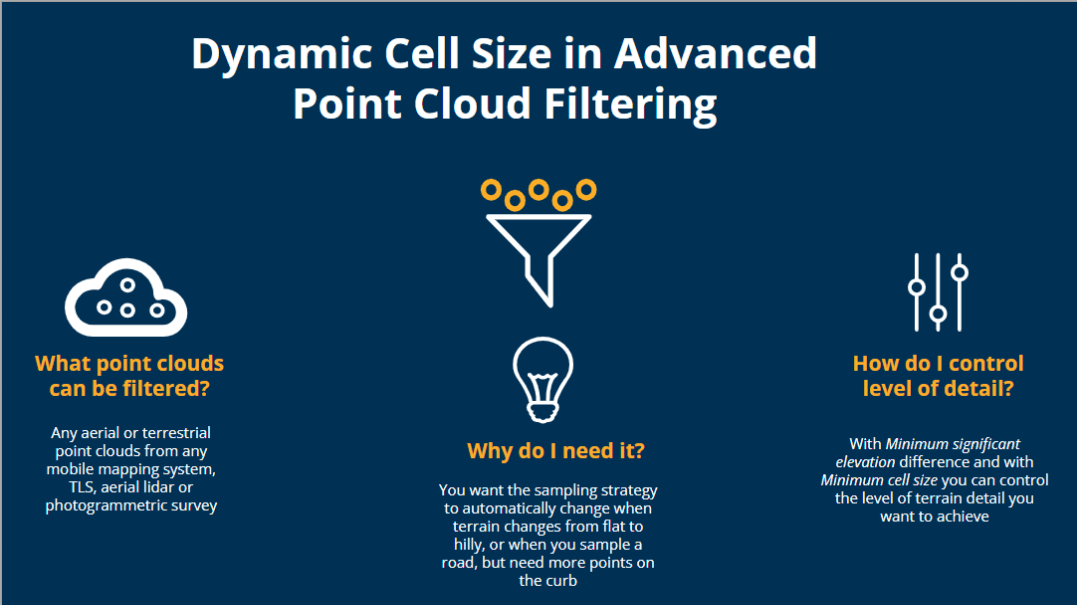Cutting-edge feature extraction capabilities in Trimble Business Center
Trimble® Business Center (TBC) office software includes cutting-edge feature extraction capabilities designed to maximize the value of collected data. These functionalities are designed to enhance, streamline and transform how infrastructure and geospatial professionals collect and turn their data into deliverables that meet project requirements and deadlines.
New point cloud classifiers
Railway classification: In 2024, TBC introduced a 3D deep learning model specifically pre-trained for railway applications. This classifier can distinguish between rail, sleeper and ballast, making it a valuable tool for infrastructure customers who increasingly rely on mobile mapping systems and UAVs for railway inspections.
By utilizing trajectory data, the processing time for large datasets is optimized, ensuring not only accurate, but also efficient classification.
Outdoor (aerial) classification: The old algorithm-based approach has been replaced with 3D deep learning. This new approach brings enhanced accuracy and granularity to outdoor (aerial) classification. Powered by AI-based automated refinement, the 3D deep learning model can now recognize nine classes, compared to the five classes possible with traditional algorithms.
This classifier works with any photogrammetric and aerial LiDAR point clouds, making it a highly effective way to understand your data better and prepare it for further workflows.

Intelligent point cloud filtering
Advanced point cloud filtering: Building on the filtering capabilities introduced in previous versions, the latest update brings a dynamic cell size option. This new option automates the resizing of the sampling cell to avoid losing terrain features during the sampling process.
The dynamic cell size adapts its size according to terrain changes, ensuring that users maintain a high level of detail across various landscapes. This filtering technique can be applied to any aerial or terrestrial point clouds from mobile mapping systems, TLS, aerial LiDAR or photogrammetric surveys.
Benefits and control: The dynamic cell size option is particularly useful when the terrain changes from flat to hilly or when sampling roads that require more points on the curb. Users can control the level of terrain detail by adjusting the minimum significant elevation difference and minimum cell size settings.

Complete pavement inspection lifecycle with Trimble
Pavement condition inspection in TBC is a part of a seamless workflow for pavement and roadway asset lifecycle management. This complete workflow includes rapid data collection with the Trimble MX-series mobile mapping systems, information extraction in TBC, cloud storage and stakeholder access via Trimble Connect, and transportation asset management in AgileAssets software.

As for pavement inspection in TBC, users can take advantage of major enhancements in this area:
-
Crack detection model that provides better detection rate and is more robust to compare to shadows on the pavement
-
Impresive processing speed, with analysis up to eight times faster and more stability
compared to the previous version -
Heat maps can be generated for only selected parts of the analyzed pavement
More information
For more on feature extraction and point cloud classification, visit the TBC YouTube channel.